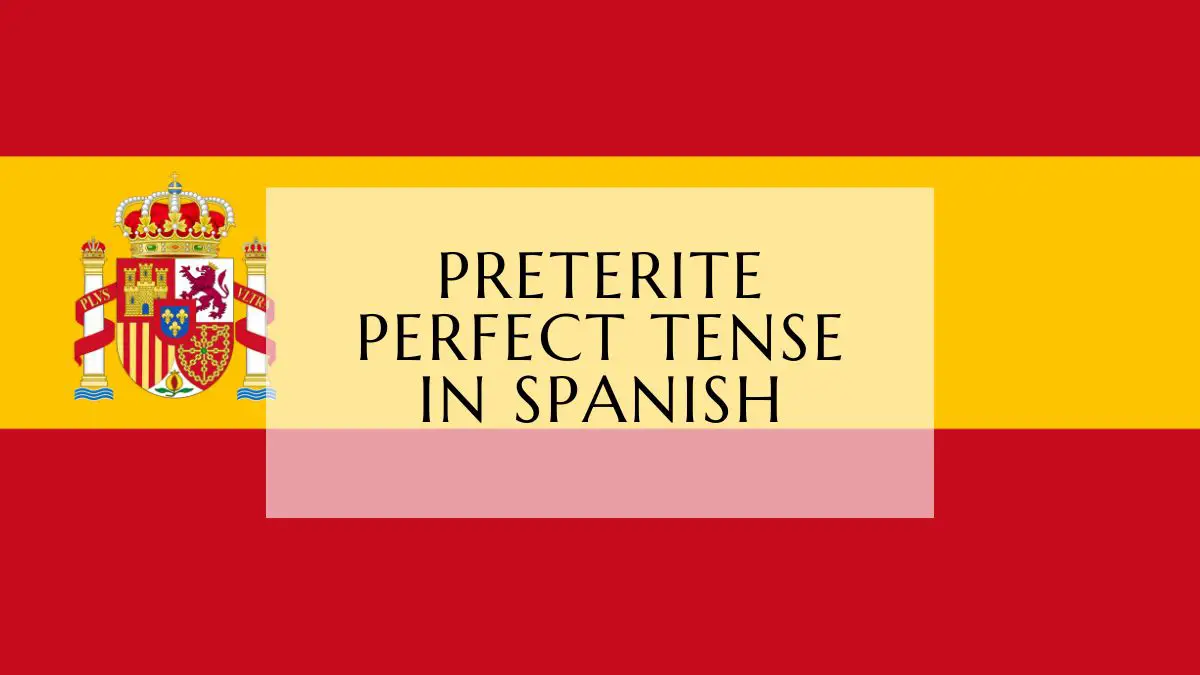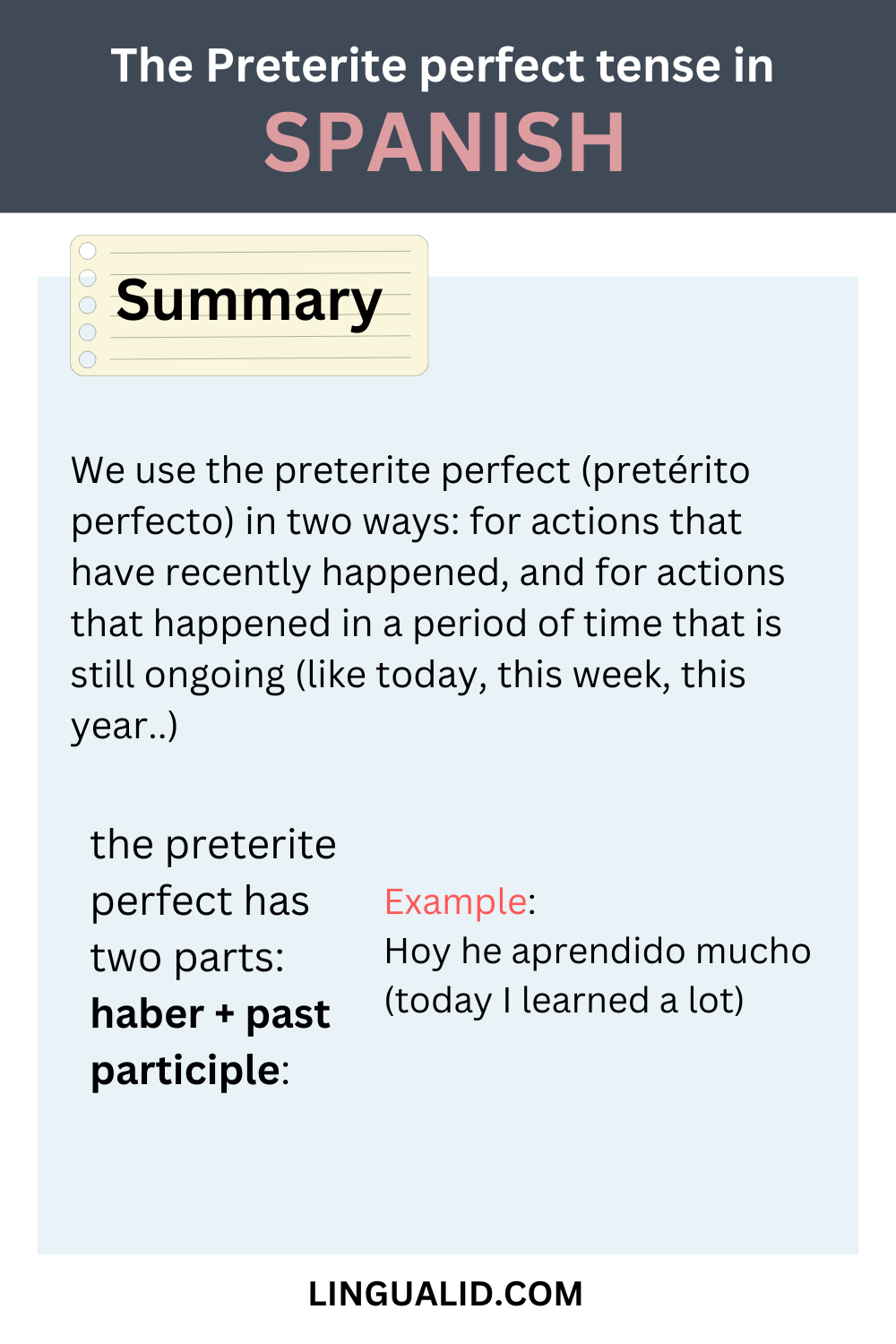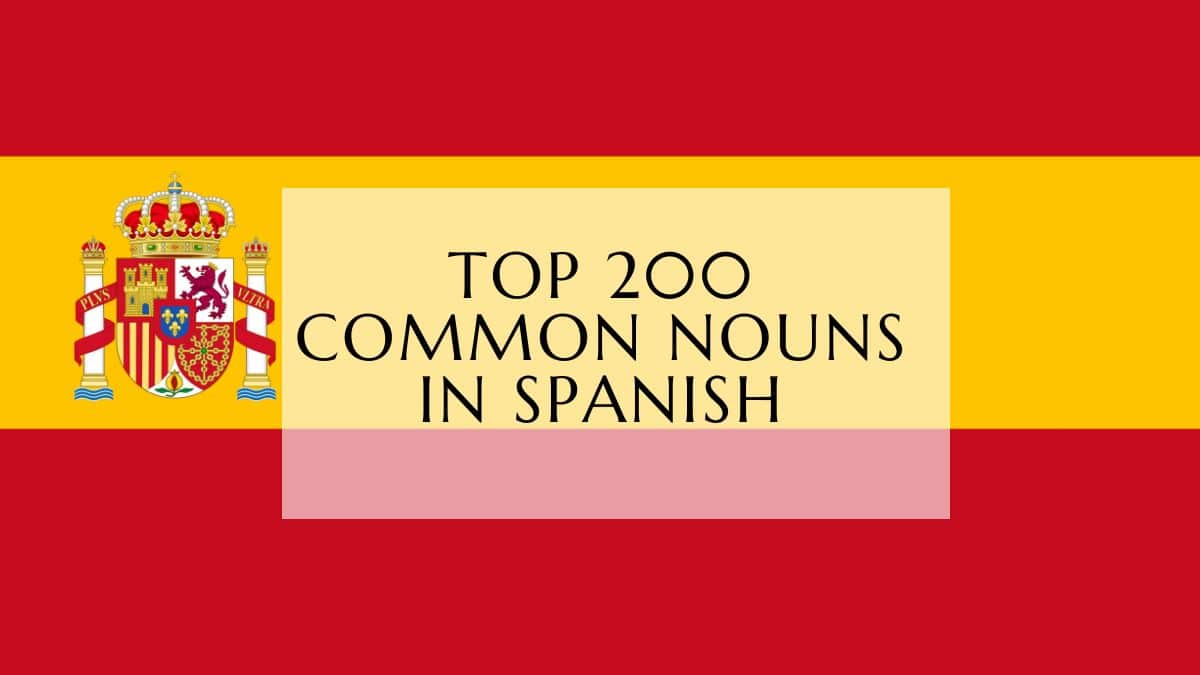In This lesson we will talk about the Preterite perfect tense in Spanish (Pretérito perfecto), its form and when to use it, and the difference between this tense and the pretérito indefinido, let’s get started!

The Preterite Perfect Tense In Spanish
We use the preterite perfect (pretérito perfecto) in two ways: for actions that have recently happened, and for actions that happened in a period of time that is still ongoing (like today, this week, this year..)
Example: Hoy he aprendido mucho (today I learned a lot)
How To Form The Preterite Perfect
As you noticed, the preterite perfect has two parts: haber + past participle, get comfortable as we will explain each one and make it easy to understand:
The verb Haber is an auxiliary verb that tell us who is performing the action (from its conjugation) let’s see its present form:
| Yo | he |
| Tú | has |
| Él/ ella | ha |
| Usted | ha |
| Nosotros / Nosotras | hemos |
| Vosotros / Vosotras | habéis |
| Ellos / Ellas | han |
| Ustedes | han |
Now let’s see how to form the past participle for regular verbs:
Verbs ending in -ar: replace the final “ar” with “ado“: hablado, estudiado
Verbs ending in -ir and -er: replace the ending with “ido”: comido, recibido
Example: Hablar:
| Yo | he hablado |
| Tú | has hablado |
| Él/ ella | ha hablado |
| Usted | ha hablado |
| Nosotros / Nosotras | hemos hablado |
| Vosotros / Vosotras | habéis hablado |
| Ellos / Ellas | han hablado |
| Ustedes | han hablado |
Note: you can practice what you’ve learned here, and learn how to pronounce each of the words in our Memrise course here, don’t know how to use the platform or sign up? we’ve got you covered in this easy-to-follow tutorial here.
Some Irregular verbs:
Hacer (to do) – hecho
Ver (to see) – visto
Volver (to come back) – vuelto
Poner (to put) – puesto
Pretérito Perfecto Vs Pretérito Indefinido
Deciding when to use the “pretérito perfecto” and “indefinido” can get confusing as you’ll find many Spanish speakers using it differently, but the main difference is:
Pretérito indefinido: the action is finished in the past
Pretérito perfecto: the action is in the past, but connected to the present moment, and we can use it also if we don’t want to specify the time when the action has happened.

Spanish Preterite Perfect Tense Review
Quiz
Instructions: Answer the following questions in 2-3 sentences.
- What are the two components of the preterite perfect tense in Spanish?
- Provide an example sentence using the preterite perfect tense and translate it to English.
- How do you form the past participle for regular verbs ending in “-ar”?
- How is the past participle formed for regular verbs ending in “-er” and “-ir”?
- Conjugate the verb “hablar” (to speak) in the preterite perfect tense for the pronoun “nosotros.”
- List three irregular verbs and their corresponding past participles in the preterite perfect tense.
- When is it appropriate to use the preterite perfect tense versus the preterite indefinite tense?
- Provide an example of a situation where you would use the preterite indefinite tense.
- What does the auxiliary verb “haber” indicate in the preterite perfect tense?
- How does understanding the context of a sentence help you determine whether to use the preterite perfect or preterite indefinite tense?
Answer Key
- The preterite perfect tense in Spanish is formed by combining the auxiliary verb “haber” with the past participle of the main verb.
- Example: “He comido mucho hoy.” Translation: “I have eaten a lot today.”
- For regular verbs ending in “-ar,” you form the past participle by replacing the “-ar” with “-ado.” For example, “hablar” becomes “hablado.”
- For regular verbs ending in “-er” and “-ir,” you form the past participle by replacing the ending with “-ido.” For example, “comer” becomes “comido” and “vivir” becomes “vivido.”
- The conjugation for “nosotros” in the preterite perfect tense is: “Nosotros hemos hablado.”
- Hacer (to do) – hecho
- Ver (to see) – visto
- Volver (to come back) – vuelto
- Use the preterite perfect for actions connected to the present, recent events, or when the specific time is unspecified. Use the preterite indefinite for completed past actions with no connection to the present.
- Example using preterite indefinite: “Ayer, comí pizza.” (Yesterday, I ate pizza.) This action is finished and has no connection to the present.
- The auxiliary verb “haber” indicates who is performing the action by being conjugated to match the subject of the sentence.
- Understanding if the action has a connection to the present or is a completed past event will help you determine the appropriate tense.
Happy learning!
Oualid Cheddadi is the founder of Lingualid, a platform that inspires independent language learners worldwide, regardless of the language they are learning. The name “Lingualid” is derived from the Portuguese word for “language,” “língua,” and the last three letters of Oualid’s name, “Lid.”



